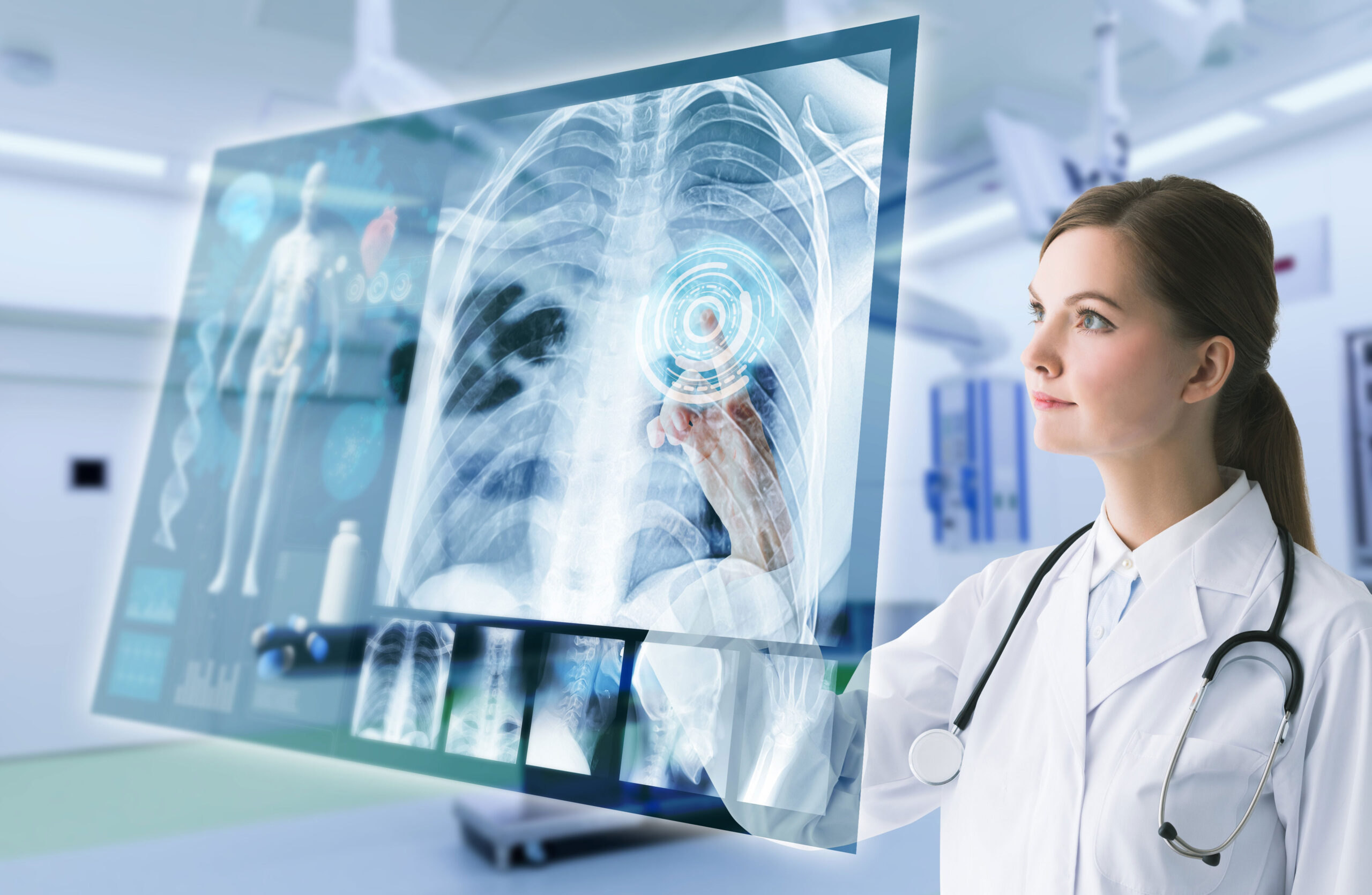What is Radiology?
Radiology refers to the study and use of imaging technologies to diagnose and treat diseases. It helps doctors examine the internal structures of the body and identify issues such as fractures, tumors, infections, and many other medical conditions. Radiology is divided into two main branches: diagnostic radiology and interventional radiology.
Diagnostic Radiology: This branch involves capturing images of various parts of the body so that doctors can diagnose existing issues.
Interventional Radiology: In this branch, doctors use live images to guide therapeutic procedures. This type of radiology helps reduce the need for invasive surgeries.
Types of Radiology and Their Applications
X-ray X-ray is one of the oldest and most commonly used imaging techniques in radiology. It uses electromagnetic rays to create two-dimensional images of the internal structures of the body. This method is especially effective for examining bones and hard structures such as teeth.
Applications of X-ray:
- Diagnosing bone fractures and cracks
- Examining teeth in dentistry
- Diagnosing lung diseases such as pneumonia
- Identifying foreign objects in the body
CT Scan (Computed Tomography) A CT scan is a more advanced technique than X-ray, which creates three-dimensional and more accurate images of the body. The CT scanner takes multiple cross-sectional images from various angles, which are then reconstructed into a 3D model using a computer.
Applications of CT Scan:
- Diagnosing tumors and cancers
- Examining brain injuries and internal bleeding
- Identifying heart and vascular problems
- Assessing injuries from accidents or trauma
MRI (Magnetic Resonance Imaging) MRI is an advanced technique that uses strong magnetic fields and radio waves to create detailed images of soft tissues in the body. Unlike X-rays or CT scans, MRI is particularly useful for examining soft organs like the brain, spinal cord, muscles, and heart.
Applications of MRI:
- Examining neurological problems such as Multiple Sclerosis (MS)
- Diagnosing joint and muscle injuries
- Identifying brain and spinal tumors
- Assessing heart and vascular function
Ultrasound Ultrasound is another non-invasive imaging method that uses sound waves to create live images of internal organs. Ultrasound is commonly used to examine organs such as the heart, liver, kidneys, and especially during pregnancy to monitor fetal development.
Applications of Ultrasound:
- Monitoring fetal development during pregnancy
- Diagnosing abdominal tumors and cysts
- Evaluating kidney and bladder problems
- Assessing heart and vascular function
Interventional Radiology Interventional radiology refers to techniques that use live images to guide medical treatments. These methods allow doctors to perform procedures with greater precision without the need for open surgery. Interventional radiology is used to diagnose and treat various conditions, including vascular stenosis, tumors, and internal bleeding.
Applications of Interventional Radiology:
- Treating coronary artery stenosis with angioplasty
- Non-surgical tumor treatment
- Draining cysts and fluids from the body
- Treating internal bleeding
Mammography Mammography is a specialized radiology method used to examine breast tissue. This method is particularly used for early detection of breast cancer. Mammography helps doctors identify even small lumps in breast tissue.
Applications of Mammography:
- Early detection of breast cancer
- Evaluating abnormal changes in breast tissue
- Monitoring a patient’s status after breast cancer treatment
Diagnostic Radiology and Its Importance
Diagnostic radiology allows doctors to quickly and accurately identify problems in patients. In cases where disease symptoms are unclear or more in-depth examination of the organs is necessary, radiology plays a crucial role as one of the most important medical tools. These methods are especially important in diagnosing cancers, cardiovascular diseases, and neurological disorders.
How to Prepare for a Radiology Test
Preparation for a radiology test depends on the type of imaging. For some tests, like CT scans or MRIs, patients may be required to avoid eating or drinking before the test. In some cases, a contrast material may need to be injected to improve image quality. Your doctor or radiology technician will provide specific instructions before your imaging procedure.
Differences Between Various Types of Radiology
Each radiology method has its own characteristics and applications. For instance, X-rays are suitable for examining bones and hard structures, while MRI is ideal for investigating soft tissues like the brain and muscles. The choice of imaging method depends on the patient’s condition and the doctor’s requirements.
Why is Radiology Important?
Radiology is one of the main diagnostic tools in modern medicine. Using these methods, doctors can examine problems that would otherwise be difficult to detect. For example, with radiology, doctors can detect tumors at early stages and offer more effective treatments. Additionally, radiology aids in quick and accurate diagnoses in emergency situations, such as internal bleeding.
Nasl-e Omid Polyclinic: A Leading Provider of Radiology Services
If you need radiology services, Nasl-e Omid Polyclinic is one of the best options for you. This clinic, equipped with advanced technology and staffed with experienced specialists, provides a wide range of radiology services, including X-ray, CT scan, MRI, and ultrasound. Nasl-e Omid Polyclinic, with its patient-centered approach, strives to deliver the best and most accurate results.
Advantages of Nasl-e Omid Polyclinic:
- Advanced Equipment: Use of the latest radiology devices to deliver high-quality images.
- Experienced Staff: A team of skilled doctors and technicians specializing in radiology.
- Efficient Scheduling: Quick results with high diagnostic accuracy.
- Comfortable and Hygienic Environment: A pleasant and hygienic environment to ensure patient comfort.
Conclusion
Radiology plays a vital role in the diagnosis and treatment of diseases, and with technological advancements, there are various methods to examine the internal condition of the body. If you need high-accuracy imaging services, Nasl-e Omid Polyclinic is ready to serve you with the best facilities and services.


